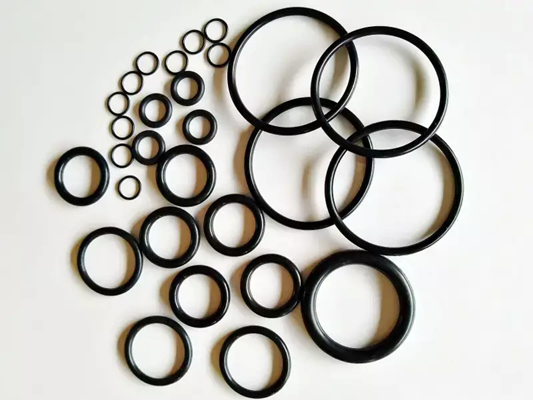Is Fluorocarbon Rubber O-ring Better Than Nitrile Rubber O-Ring
O-rings play a crucial role in preventing leaks of liquids or gases under specific temperatures, pressures, and different media. Their primary functions include dust sealing, water sealing, or oil sealing. Seals can handle various media, primarily gases and liquids, which include water, oil, or mixtures of different liquids. Therefore, the performance of a seal directly impacts the performance of other equipment, with the material of the seal being the primary determinant of its effectiveness.
In measuring instrument, Fluorocarbon rubber (FKM) O-rings and nitrile rubber (NBR) O-rings are common sealing materials, each exhibiting distinct properties under various environmental conditions.

Fluorocarbon Rubber O-Rings:
Fluorocarbon rubber O-rings are renowned for their exceptional chemical resistance and possess the following characteristics:
Excellent Corrosion Resistance: Fluorocarbon rubber O-rings can withstand the erosion of acids, bases, and other chemical substances. They are highly resistant to chemical solvents, oils, and other liquids, making them less susceptible to damage.
High-Temperature Resistance: These O-rings exhibit remarkable high-temperature performance. They can operate stably in high-temperature environments for extended periods without degrading or aging, ensuring long-term reliability.
Wide Applicability: Fluorocarbon rubber O-rings are suitable for a wide range of industrial applications, including chemical, petroleum, and pharmaceutical sectors. Their versatility makes them ideal for various sealing needs in different environments.
However, note that Fluorocarbon rubber O-rings are less effective in low-temperature conditions, typically becoming hard and losing elasticity below -15°C to -20°C. This can lead to a reduction in sealing performance in cold environments.
Nitrile Rubber O-Rings:
Nitrile rubber O-rings excel in low-temperature environments, maintaining elasticity and sealing performance down to -40°C to -55°C. This makes them ideal for applications in cold environments, such as refrigeration equipment and outdoor systems in colder regions. However, they are not resistant to high-temperature. Prolonged exposure to high temperatures would lead to aging, hardening, and a decrease in sealing effectiveness.
Besides, they offer strong resistance to general acidic and alkaline solutions and oils but not so resistant to highly corrosive media such as strong acids and bases.
In certain highly corrosive environments, nitrile rubber O-rings may require additional protective measures or alternative sealing materials to maintain performance.
Holykell offers different materials of O-rings except FKM and NBR.
How to Select the Right O-ring Materials
Selecting the right material for seals is crucial for ensuring effective performance and longevity. Here are the key factors to consider when choosing seal materials:
Movement Speed: For static seals, where there is no relative motion between the seal and the sealing surface, the material’s wear resistance and hardness requirements are relatively low. However, for dynamic seals, where there is relative motion, the material must be able to withstand the mechanical movement speed.
Pressure: The material of the seal is highly sensitive to operating pressure. Different materials can handle varying pressure levels, so seals are categorized by their pressure, oil, and temperature resistance. If the pressure exceeds the material’s tolerance, it can lead to leakage and reduced seal life.
Media Compatibility: The compatibility of the seal material with the medium it will be in contact with is crucial. Some seal materials may react negatively with certain media, leading to seal damage and contamination of the medium.
Temperature: Temperature has a significant impact on seal materials. Excessively high temperatures can reduce the seal’s elasticity and hardness, while extremely low temperatures can make the seal brittle and prone to cracking. Each seal material has a specific temperature range within which it performs optimally.
Conclusion:
In summary, fluorocarbon rubber O-rings have a significant advantage in terms of corrosion resistance and high-temperature performance, making them suitable for sealing needs in various chemical environments. Nitrile rubber O-rings perform well in general environments and excel in low-temperature conditions but have limitations in highly corrosive and high-temperature environments. Therefore, when selecting O-rings, it is crucial to consider the specific usage environment and requirements to make an informed choice.
Different sealing materials each have their own advantages and disadvantages. Selecting the appropriate sealing material based on specific application requirements—such as temperature, chemical corrosion, pressure, and wear—is crucial. Understanding the characteristics and applications of these common sealing materials helps in making the best choices in design and maintenance.
Contact us for more details.





